
Point and Call
Point and Call Eliminates Almost All Errors
When you ride public transport in Japan —
trains, subway, and buses —
you will notice the driver and other staff pointing
at things and talking to... who, exactly?
Shisa Kanko
or "Point and Call"
is said to apply the Buddhist concept of mindfulness
to eliminate errors.
You point to something as you look at it,
and say aloud what you observe.
Multiple areas of your brain are involved simultaneously,
making errors far less likely.
Larger stations have staff on the platforms, like this
uniformed man in the Kuramae Station in the
Tōkyō subway.
He's available to help travelers find their way.
That is, until a train approaches the station.
Then he springs into action, helping to avoid
accidents and errors.

How Shisa Kanko Began
Railways have been Japan's most important form of passenger transportation since the late nineteenth century. A railway opened between Shinbashi in Tōkyō and Yokohama in 1872. By 1889 there were railways on all of the four largest islands. By 1893, steam locomotives were being built in Japan.
Yasoichi Hori was a train driver in the early 20th century. At some point he came to believe that he was losing his vision, so he enlisted his fireman, who fed fuel into the engine. Hori said that whenever he needed to make a decision based on what he saw — a steam pressure gauge, a speed gauge, a signal or sign down the track — he would point to the object and describe what he saw. The fireman's job was to verify what Hori said.
The railroad was soon mystified as to why one of their train drivers was significantly better than all the others. He was always exactly on schedule, and precisely followed all signals. It's not as though there is some way to cheat at driving trains.
Hori explained what he was doing, and in 1913 the technique was included in a railway manual. Henceforth, this would be how all Japanese trains would be operated.
Involving the Staff
The number of staff on a modern Japanese train depends on its size. A small local train might just have a driver. Over a certain size, there will be a conductor riding at the rear.
Depending on the size of the station, there may be one or more staff working on the platform.
Here is one of two platform staff checking his accurate watch against the equally accurate platform clock. We're on the Express platform at Nagoya. This isn't my train. The next train will take me south to Ise.
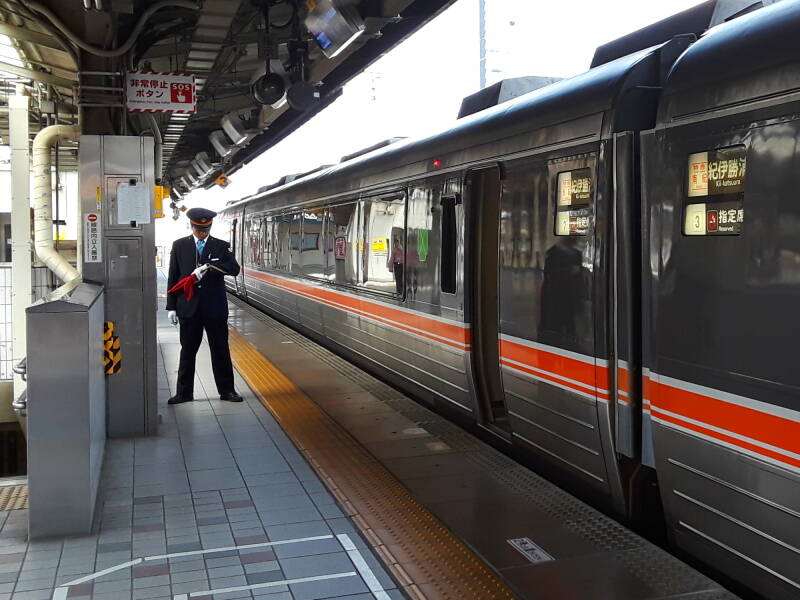
Now he is confirming the time displayed on the station clock.

He has checked the doorways and the gap between the train and the platform. The conductor has stepped out onto the platform at the rear of the train. They check each other's work.
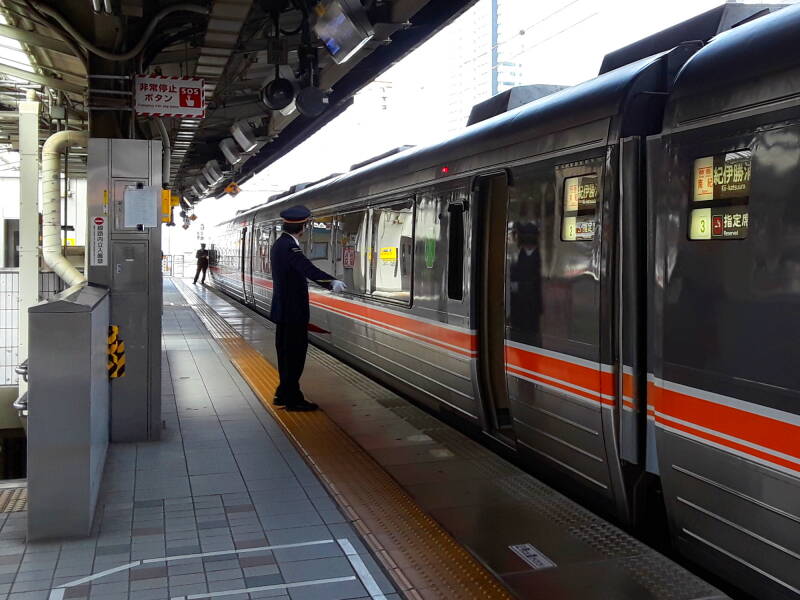
The clock and the electronic schedule board agree that it's time for the train to depart.
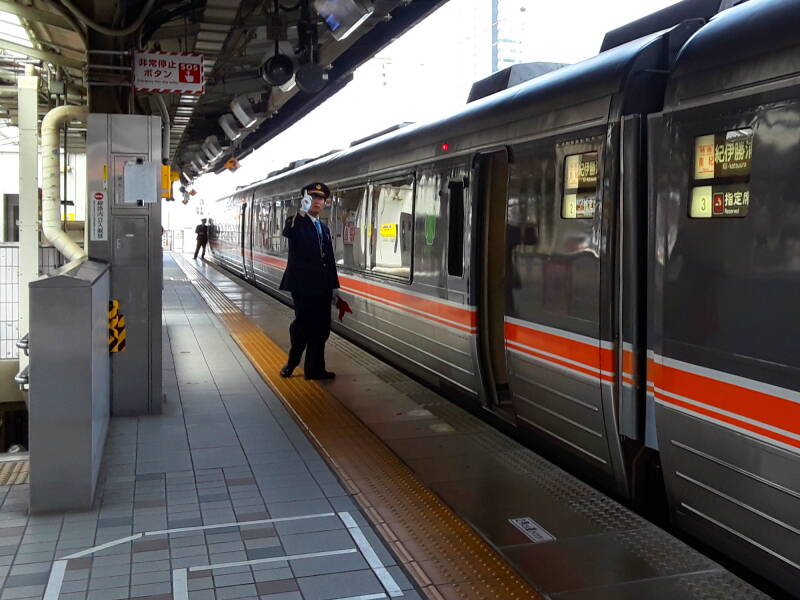
Once the train has pulled out, the platform staff will step to the edge of the platform and check for debris on the track. They will point off in one direction along the track, then sweep their arm down and out the opposite direction, their eyes following where they point.
Platform Staff on a Box
This member of the platform staff at a Tōkyō subway station has a box to stand on. He will monitor the platform gates, the train doors, and the passenger movements.

He can use a radio microphone to communicate with station and train staff.
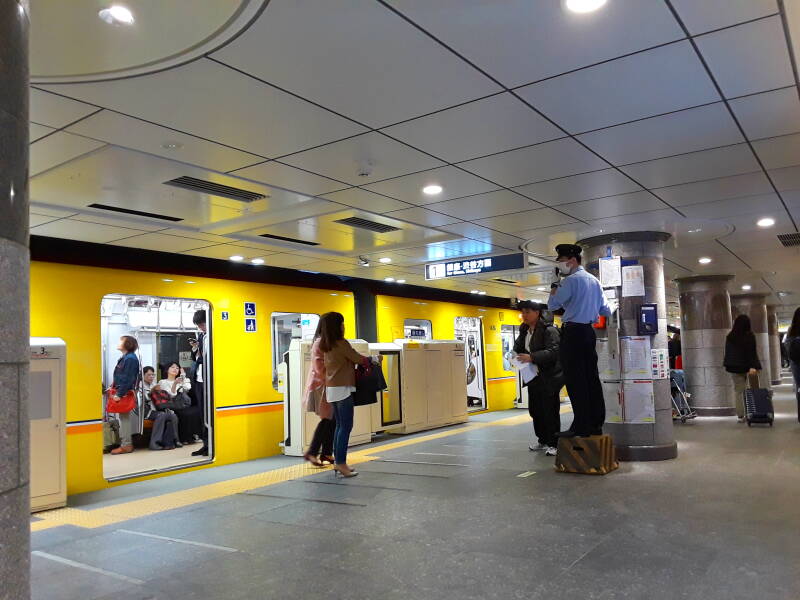
Now it's time for him to point and clearly announce what he's seeing. The train doors and platform gates are closing.
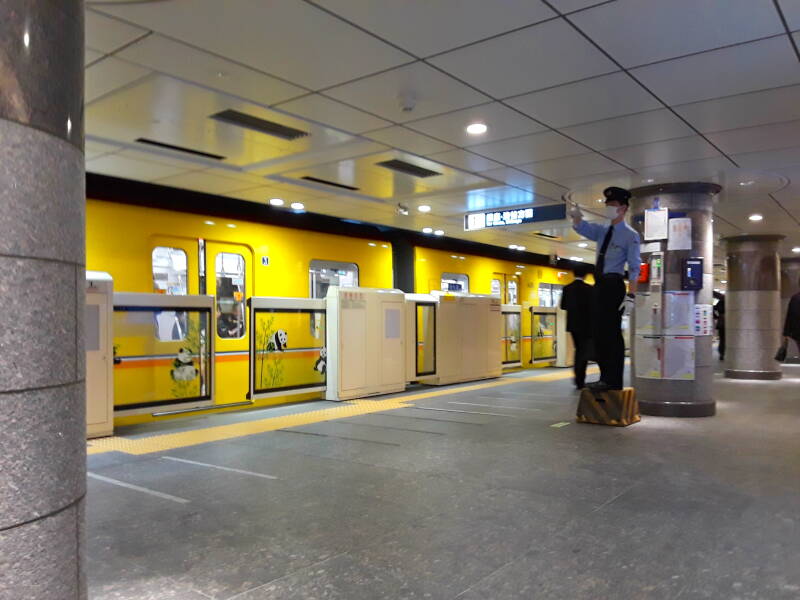
The staff calls out whatever they have just verified, followed by yoshi or "good", or o-lai or "all correct". The doors and gates are all closed to his left. Now he will turn to look and point the other way and announce that what he sees is good, Yoshi!
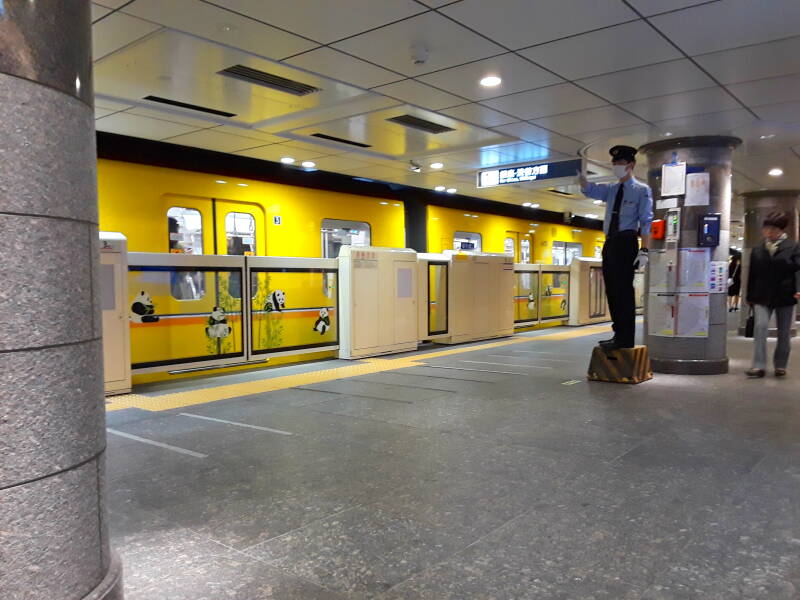
How it Works
Research has shown that any physical activity helps to activate our brains. Writing notes or highlighting text during a lecture leads to better learning than simply listening and watching while sitting still.
When we look toward an object while pointing along our line of sight, our visual focus narrows down to within a few degrees of our fingertip. Distractions fade away, and we are more likely to notice if things aren't as we expected.
Pointing and then describing what we see slows things down. It interrupts a rush to action that might be inappropriate.
Finally, simply looking at something involves only the visual area of our brain. Pointing at it involves a different area, and speaking about it involves a third area. It is much more difficult to still make a mistake when you have involved three areas of your brain.

Buddhism Recommends Mindfulness
ĀnāpānasmṛtiThat is, self-awareness. For example, becoming very aware of your breathing while meditating. This self-awareness is called Ānāpānasmṛti in Sanskrit, it's a core meditation practice taught by the Buddha in the Ānāpānasmṛti Sūtra.
Breathing in long, he discerns, "I am breathing in long"; or breathing out long, he discerns, "I am breathing out long." Or breathing in short, he discerns, "I am breathing in short"; or breathing out short, he discerns, "I am breathing out short." He trains himself, "I will breathe in sensitive to the entire body." He trains himself, "I will breathe out sensitive to the entire body." He trains himself, "I will breathe in calming bodily fabrication." He trains himself, "I will breathe out calming bodily fabrication."
Amazon
ASIN: 159477434X
Here's a member of the railway's platform staff at a station between Kamakura and Tōkyō.
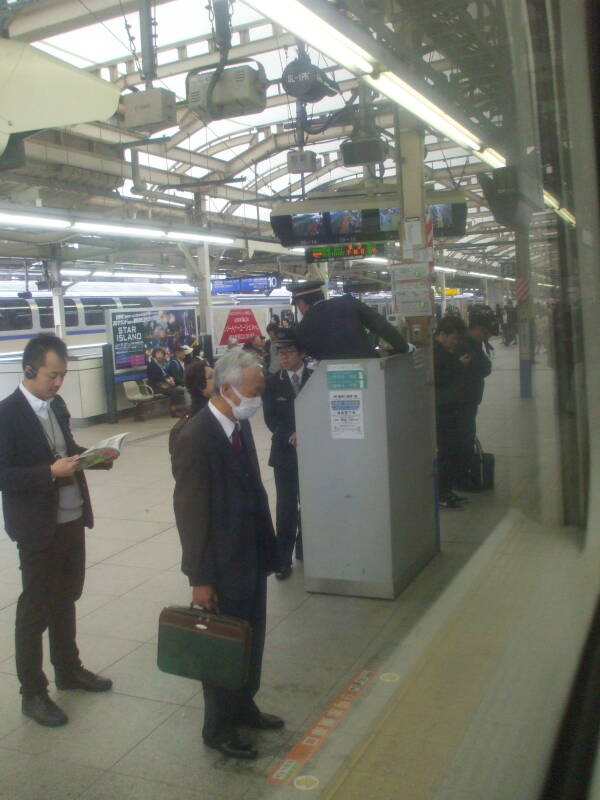
Once the train has stopped at the appropriate place and the doors have opened, and he has verified that, he may consult with other platform staff.
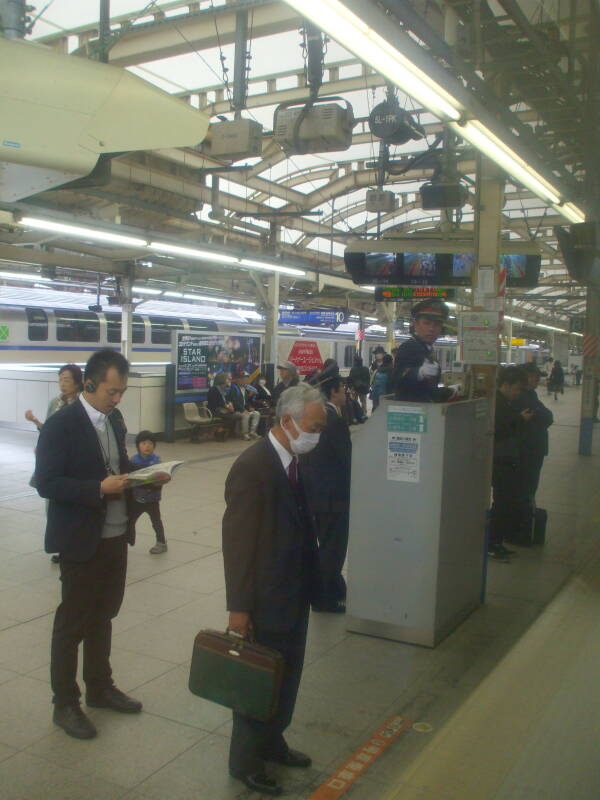
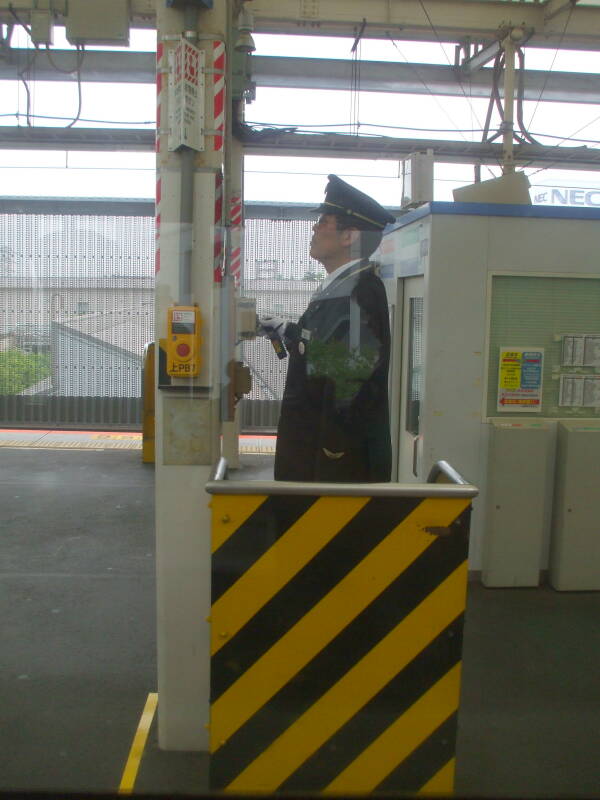
Once the time arrives to prepare the train for departure, through the time that it's pulling out, he is focused on verifying the various steps.
The Japanese rail networks are famously safe, with one passenger death per 51.4 billion passenger kilometers.
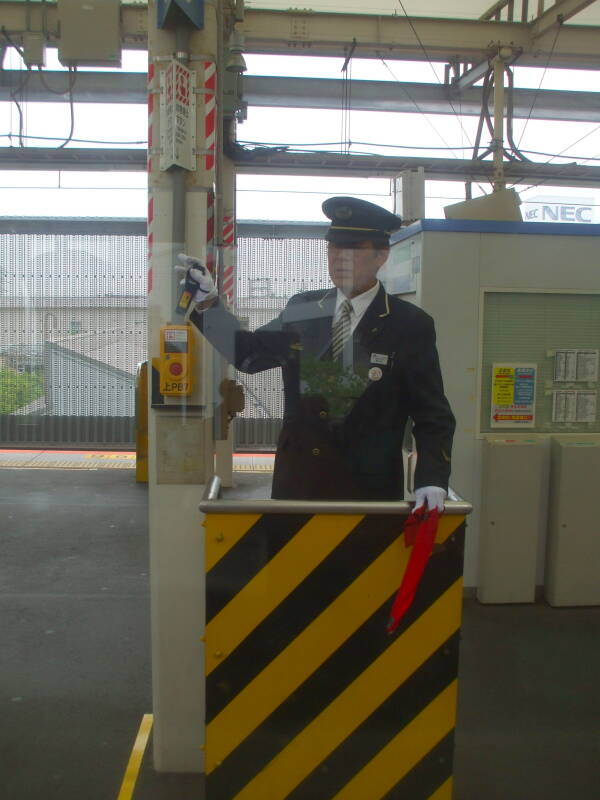
The New York City subway system started using a limited form of point and call in 1996, after a top MTA executive noticed its use during a trip to Japan. The conductor riding in a small cabin at the center of an MTA train must now look out and point at a striped placard visible when the train is stopped at the correct place within the station. Two years after requiring that step, the incidence of incorrect train placement along platforms had dropped by 57 percent.
The Washington D.C. Metro system seems to also do a limited form of this. The driver is required to step across the cabin, slide open a window, and look back along the platform. Only then do they open the doors.
Both the New York and Washington system were put in place after episodes of drivers stopping trains and opening the doors outside stations. They were opening the train doors into blank walls or tunnels. Their point and call procedures only help to prevent inappropriate door openings. As for people caught in closing doors, or items dropped on the platform or onto the tracks, that's still up to the passengers.
Point and call is already used to some extent on aircraft flight decks. The Australian aviation industry is interested in extending its use. For example, while taxiing. So far it isn't used (much) while on the ground.
Ride in Front and Watch the Driver
The Shinkansen high-speed trains are much like airliners, with the driver in a separate cabin not connected to the passenger area. That network, with six lines with trains running at speeds up to 320 km/h, has carried more than 10 billion passengers without a single passenger death from derailment or collision. But you can't see into the driver's compartment or out the front.
However, many of the regular express and local trains are built much like nice subway cars. In the front car, the driver's compartment has a clear plastic rear panel.
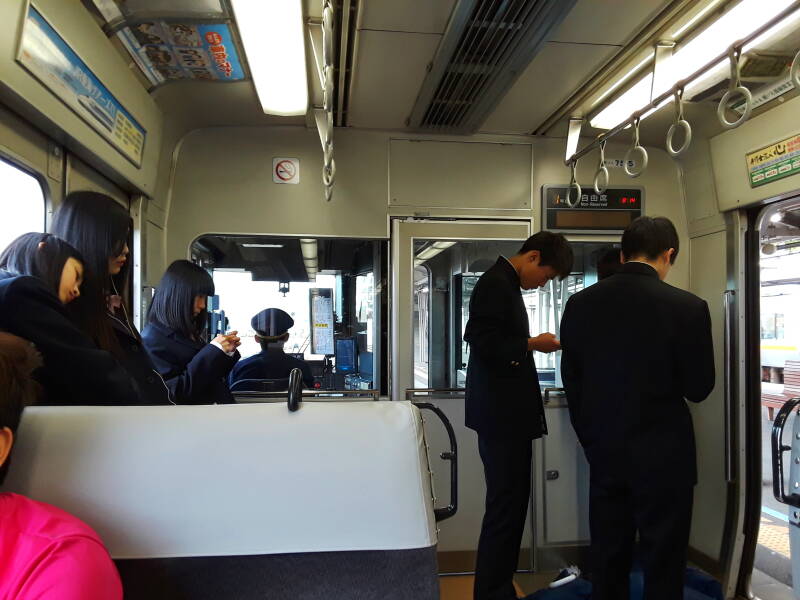
You can stand behind the driver and watch the operation. The vertical panel to his right holds a detailed schedule, with the precise arrival and departure times all along the route. This is a local train from Ise to Futaminoura, where I will walk to Meoto Iwa, the "Married Rocks".
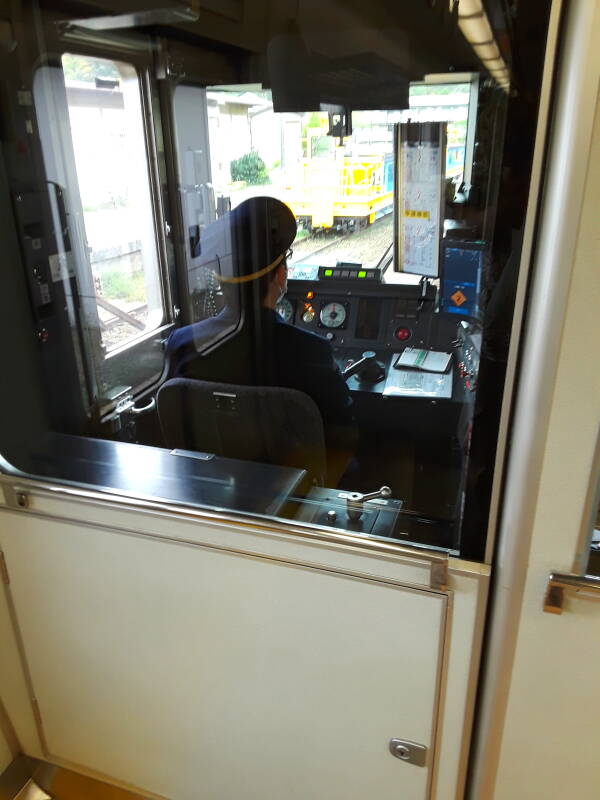
During a station stop, the driver checks the clock on the station platform and the clock on the dashboard. Then you see him:
- Run his finger down the schedule to find the departure time for this station, then point at the relevant line and speak.
- Point and look at the dashboard clock and say something.
- Look down the track ahead of the train, point at a signal light and say something.
- Release the brakes and advance the throttle, starting the train out of the station.

I took an express train north from Ise toward Nogoya, changing along the way to a train to Nara.
There weren't many people on the train, there was plenty of room to move about.
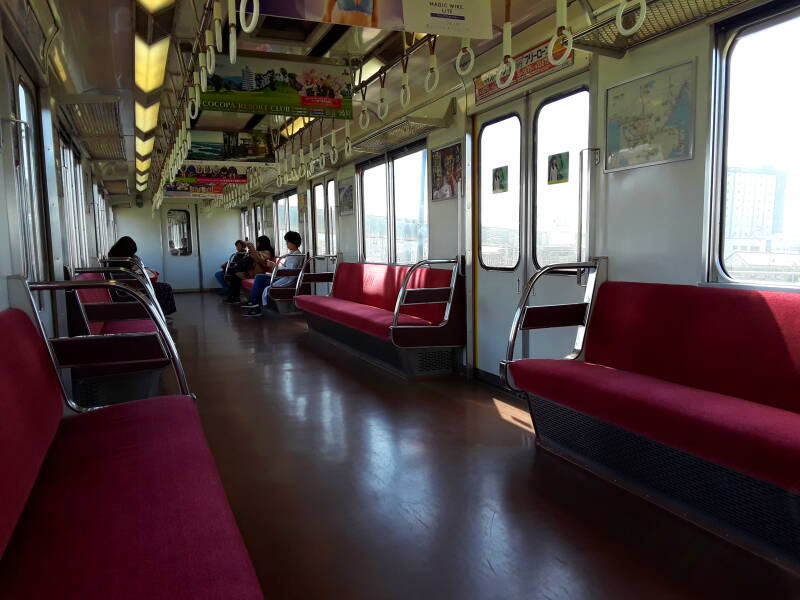
I could get the driver's view of the line. There would be more pointing and talking when approaching the station. I assume it had to do with the signal light, and verifying that no person or object had fallen off the platform onto the track.

The above is specific to travel logistics. Maybe you're looking for information on specific places in Japan.



































